Interviews

Xavier Martinez (CIMNE) and Daniel Sá (CompassIS)
Project Coordinator and Technical Leader
2021 Jun
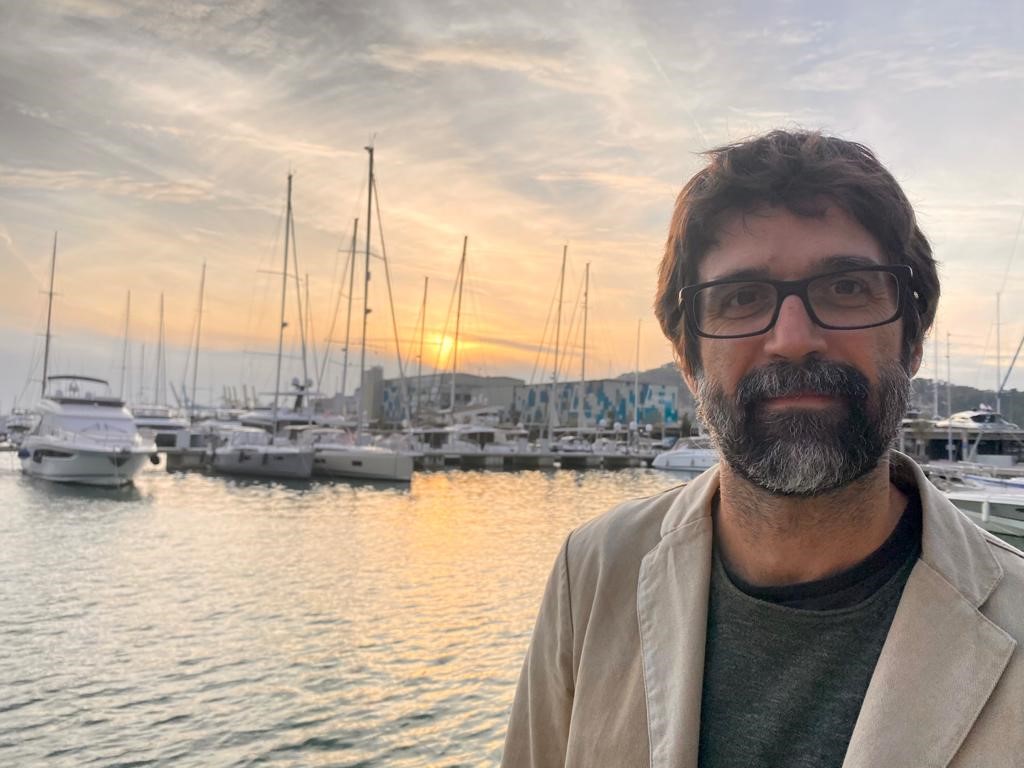
Xavier Martinez
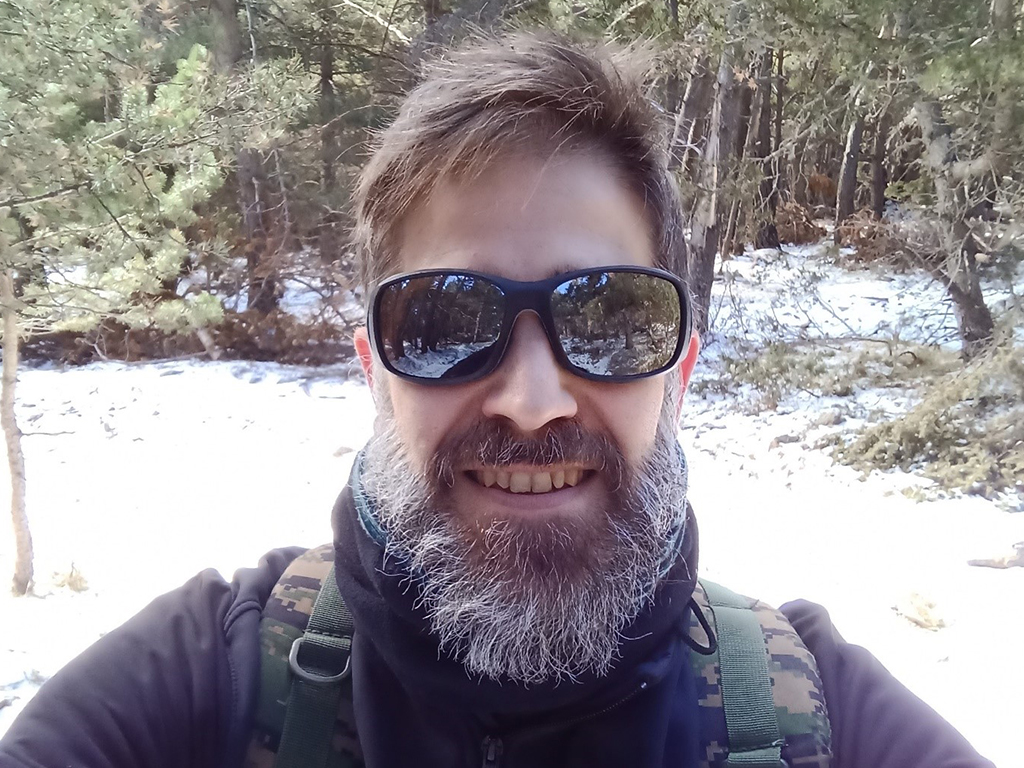
Daniel Sá

João Silva (INEGI) and Julio-Cesar De Luca (IRT Jules Verne)
Leader of FIBRE4YARDS WP2 and European Technical Coordinator
2022 Feb
Question 1 (Q1): You are involved in the FIBRE4YARDS work package (WP) called "Assessment of advanced FRP manufacturing and joining technologies to be transferred to the shipbuilding industry" (see the project structure here). Can you describe your involvement in the project?
Answer 1 (A1) João: In this work package, I have two different roles. Firstly, as a workpackage leader, I gather all the contributions from the different parties involved in the WP and coordinate all the efforts for the pursuit outcome, which is the easy part since we have an excellent and experienced team.
Additionally, I manage the INEGI's FIBRE4YARDS activities. We are responsible for the study of the feasibility of using innovative FRP manufacturing technologies and the approach that should be followed to incorporate and combine them in the production processes to be easily implemented/transferred into the shipbuilding industry. Furthermore, INEGI will be highly engaged in the definition, validation and demonstration of the strategy for the joining processes.
Julio: In FIBRE4YARDS, we will bring our expertise in composite structure functionalisation. For this purpose, we will use a quite innovative technology known as Acoustic Black Hole (ABH), which allows adding structural damping without adding mass to plate like structures. The ABH will soon become an engineering tool to produce smarter structures with added value, specially to improve noise/vibration comfort in transportation.
Q2: What are the main steps in transferring the technologies investigated in FIBRE4YARDS to the shipbuilding industry?
A2 João: Composite materials are already applied in shipbuilding for vessels up to 50 m. Still, the lack of automation reduces the production capacity. FIBRE4YARDS aims to unlock the full potential of FRP materials in this sector.
The Shipyard 4.0 concept under development in FIBRE4YARDS will require parties in the supply chain to cooperate (co-design) in a digitised manner. It is necessary to update the current manual-dependent manufacturing processes to high-automated technologies. The adoption of the proposed technologies must consider a flexible up-and-down technology scaling approach. In addition, the implementation of an IoT powered production is essential for process and quality control.
These strategies will require new skillsets for a large part of the workforce. The training and qualification of engineers and technicians are crucial to qualify the shipyard workers to use new assembly and manufacturing procedures. Therefore, FIBRE4YARDS will assess the shipyards players' skills and specific training needs.
Q3: What are the main achievements so far?
A3 João: As part of the work package "Assessment of advanced FRP manufacturing and joining technologies to be transferred to the shipbuilding industry", the partners of the FIBRE4YARDS project have been able to benchmark the current state and interests of the European shipyards together with the mapping of the current FRP manufacturing and connection technologies. Furthermore, a detailed study of the different technologies was carried out, enabling the creation of a Comparative Matrix of FRP Manufacturing Processes. A dedicated laboratory test campaign is being carried out to assess samples manufactured by the technologies in the project.
Likewise, a major focus has been placed on the connection technologies study. A thorough definition of the testing plan was devised, and the first phase study of the connection technologies is well underway. It is being carried out in parallel with real-scenario connection techniques development.
Lastly, the ABH state-of-the-art review and the preliminary modelling of ABH to simulate vibration behaviour of a plate functionalised with the ABH has been reached.
Q4: The Acoustic Black Hole has been developed very recently. How do you plan to apply this innovative technology in FIBRE4YARDS?
A4 Julio: The first step is to capitalise from the state-of-the-art and the benchmark of current structural prototypes using the ABH, that is followed by the development of a structure modelling that will assess damping added by the ABH in composite structures like a thin plate. The plate-like demonstrators sized of 1m² in composite GFRP will be functionalised with this technology and tested to prove its capacity of adding structural damping, which will be vibro-acoustically assessed. These demonstrators will allow to better market this type of solution to potential users, mainly the transport.
Q5: Could you tell us how your organisations are planning to exploit the results generated in FIBRE4YARDS with regards to current market and technology trends?
A5 João: The production of composite components benefiting from the greater repeatability and reliability of advanced manufacturing processes is a key aspect of industry competitiveness. The outcome of the FIBRE4YARDS project will allow a deeper understanding of the current and advanced manufacturing technologies by controlling the complex interactions between the raw material, the process and the final part microstructure, quality and functionality. As a result, new components can be designed and the manufacturing systems self-adjusted. All the acquired know-how will help us in our ongoing mission to constantly improve INEGI’s ability to convert knowledge into value and to confirm our solid institutional identity as a technological partner for companies.
Julio: The demonstrators produced and functionalised with the ABH technology will be used as proof of the capacity to add damping and value to composite structures, with measurable vibro-acoustic gains. Together with the modelling and these demonstrators, we will be able to approach end-users that need to improve acoustic comfort and at the same time reduce weight and propose the engineering tool that was developed and proven.
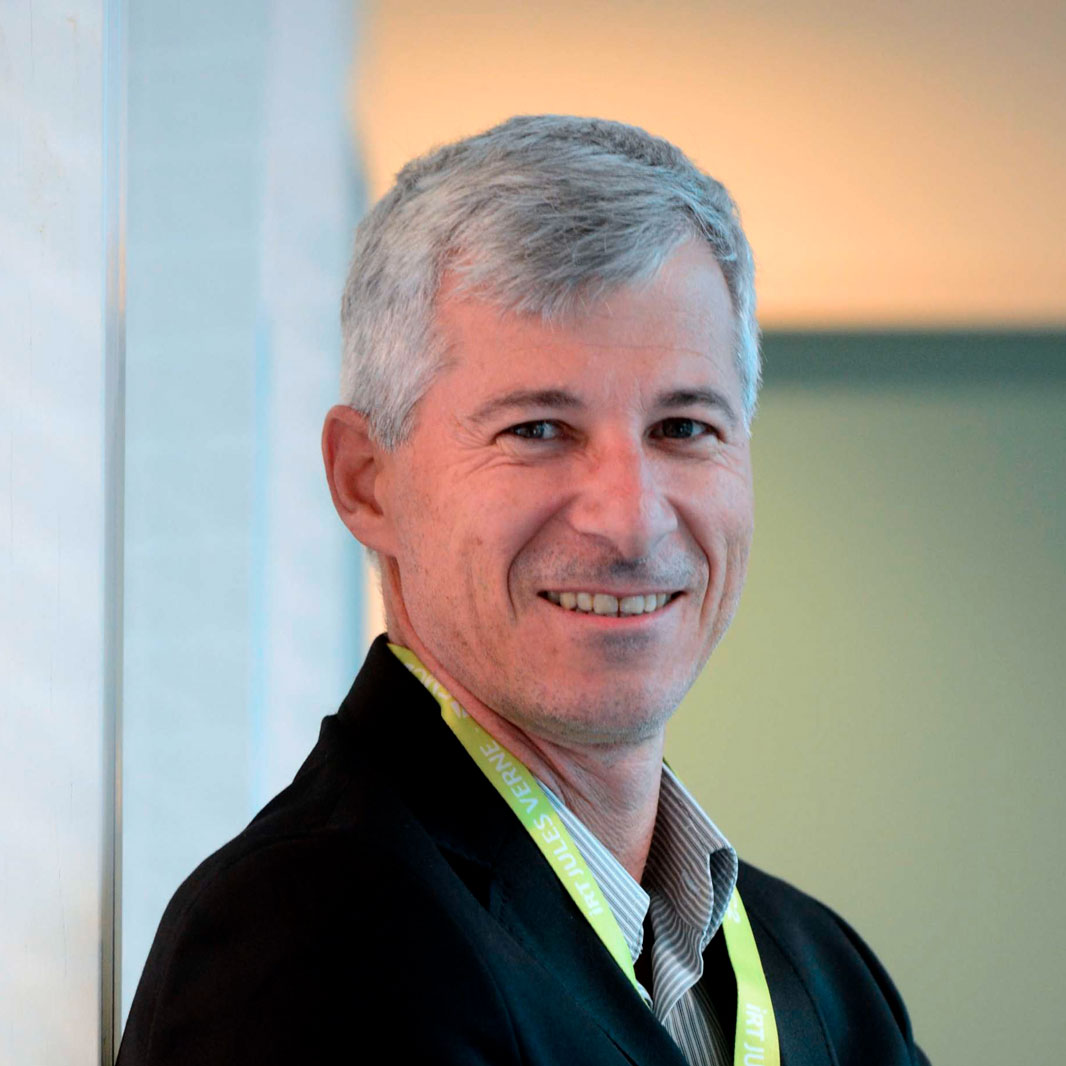
Julio-Cesar De Luca
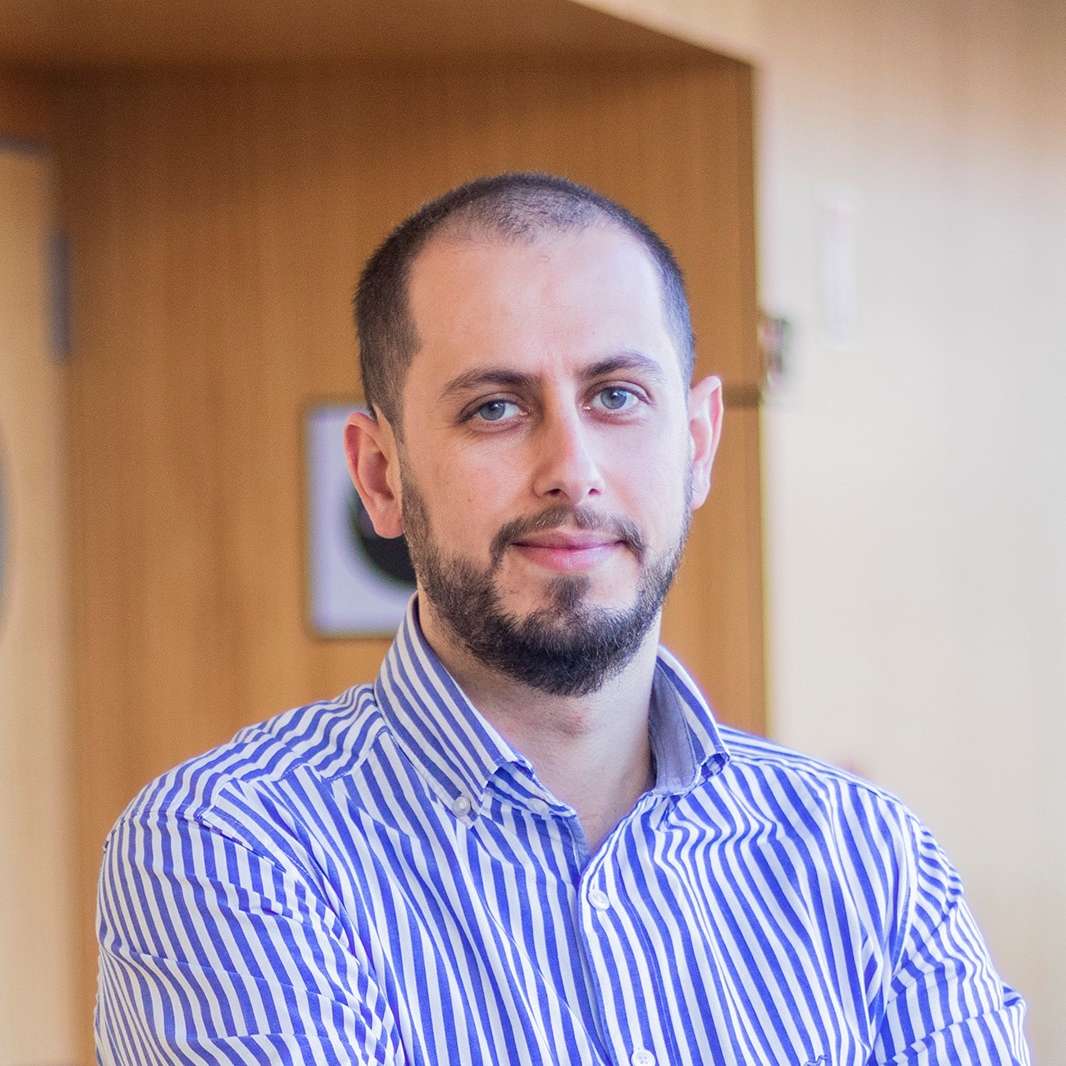
João Silva

Ricardo López (TSI)
Mechanical Engineer / Researcher
2022 Jun
❶ Your organisation (TSI) leads the activities of Work Package 4 (WP4), “Smart Manufacturing for Shipyard 4.0”. The upcoming tasks within this work package are firstly the installation of the monitoring equipment in production environments, which will start this month (June 2022), and secondly the integration of the IoT platform with the monitoring hardware in the production environments (between June and December 2022). What are the main parameters to be monitored, and what are the challenges for the integration of the IoT platform?
Ricardo López: Most of the parameters to be monitored in shipyard manufacturing processes are very similar. Monitoring these parameters can be crucial, because if they do not correspond to the expected operating values, this may indicate failure or damage to the machine.
Production parameter monitoring and predictive maintenance is one of the pillars of TSI’s business, and we can rely on a team of highly experienced consultants.
The selected parameters can be roughly divided into two categories: Process control and equipment maintenance. The most important variables for process control are temperature and pressure on the parts, atmospheric conditions (temperature and humidity), electric power consumption, resin viscosity and degree of polymerization of the resin. In maintenance, the most important parameter is acceleration for vibration analysis, which allows us to detect failures in pumps and other mobile components.
As far as the challenges of integration are concerned, I would like to mention two: The first is the data transfer from the sensors to the cloud platform developed by CIMNE. There are generally two types of data acquisition systems on the market. On the one hand, there are data acquisition systems with low sampling frequencies that are suitable for IOT but unsuitable for accelerometers. On the other hand, there are systems that are suitable for accelerometers but have almost no connectivity and capacity for automatic data processing. The biggest difficulty in our task was to find a system that can do both, as only a handful of them exists in the market.
The second challenge is the cyber security aspect of data transmission. This challenge is being addressed in task 4.2.2. (Implementation of a cyber security component for the Digital Twin), which will be led by Naval Group.
❷ What are the main advantages of the new equipment for end users?
Ricardo López: Thanks to the monitoring equipment, end users can track all important parameters of their manufacturing process. Better control of the respective process thus helps to improve quality and save costs.
To give an example drawn from the project context: In IRURENA’s UV-cured pultrusion, the monitoring system will register the vibrations and pulses of the AODD (Air-Operated Double-Diaphragm) pumps. This will allow us to detect unexpected diaphragm failures, predict the remaining operating life of said diaphragms, anticipate future failures and schedule the replacement at a convenient time.
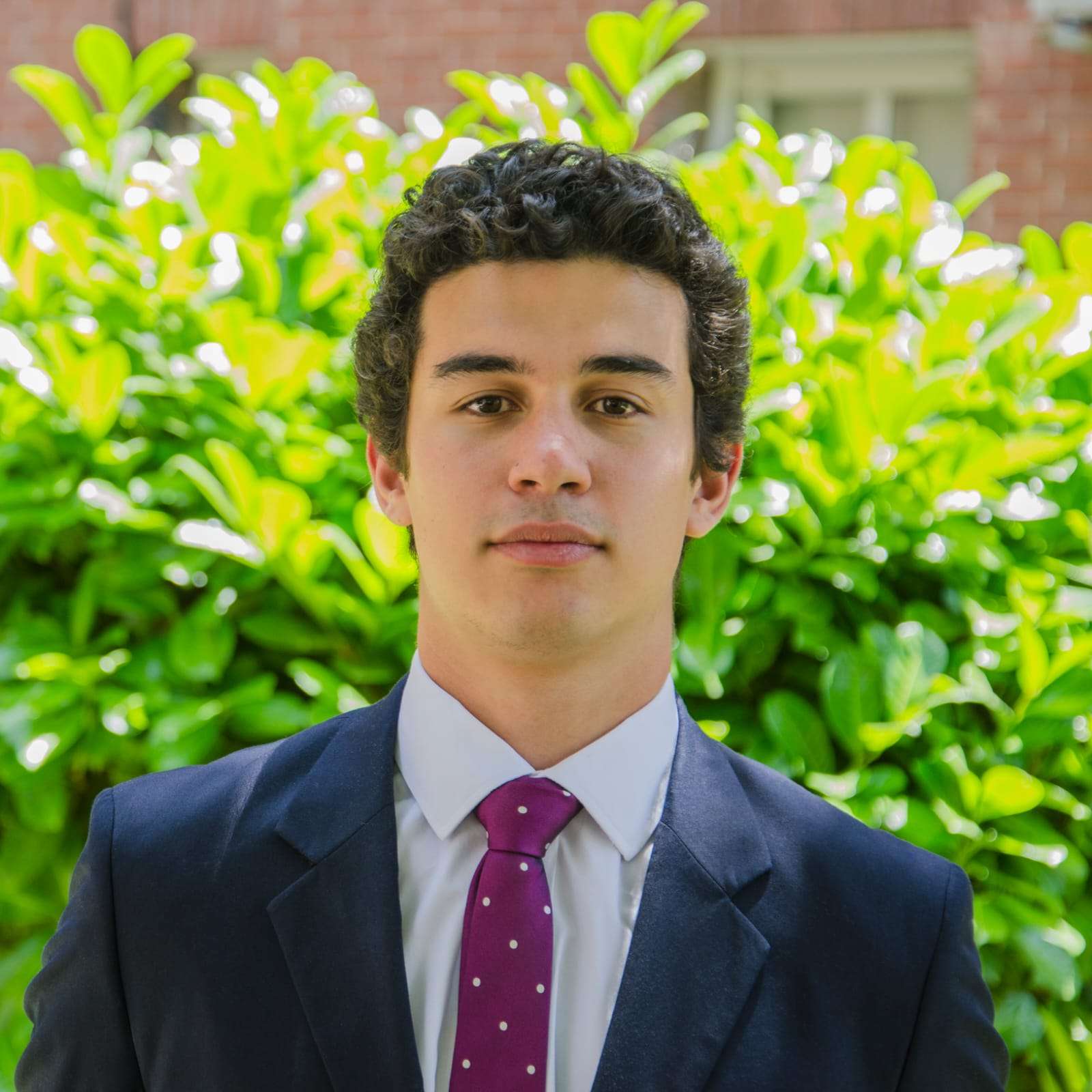
Ricardo López

Dr Joel Jurado (CompassIs)
Naval Architect / Research Engineer
2022 Jun
Dr Joel Jurado: We have completed several milestones in numerical model development by working hand-in-hand with CIMNE and holding weekly meetings to integrate these numerical tools they are developing into the Tdyn RamSeries CAE / FEA (Computer-Aided Engineering / Finite Element Analysis) environment.
Tools for simulating advanced FRP (Fibre Reinforced Polymers) parts’ connections, for example, have already been included and will be further refined by appropriate benchmarks. Currently, the same path is being followed to incorporate a beam model for pultruded sections. In the following months, another numerical tool, a specific material model for thermoplastics, will also be implemented into the Tdyn RamSeries.
The main challenges in simulating composites are their anisotropy and the different failure mechanisms acting between them. To these distinctive traits, we need to include the advanced manufacturing processes in the equation to predict the behaviour of composites. For instance, 3D printing of composites is a procedure that adds more anisotropy to the material, given that their mechanical properties also depend on the printing direction, velocity or temperature. Developing numerical models that account for all of these variables is a real milestone to tackle. However, these challenges should not be viewed as obstacles, but as opportunities to develop new tools and hence improve our designs.
❷ How do the selected technologies affect vessel design and engineering and the production of the demonstrators (patrol boat and catamaran)?
Dr Joel Jurado: All these implemented tools will be of great value to correctly model and simulate the two demonstrator designs, and thus improve them and re-engineer the structure, incorporating the advanced manufacturing technologies studied within the project.
Composite materials have the distinctive feature that their properties can be “designed” for each specific application. We can choose and hence optimise the properties and performance of a composite structure. Adding the manufacturing variable allows us to improve the current designs from the point of view of operation and manufacture beyond the traditional techniques used in shipyards. Now the structural optimization and the manufacturing are designed in parallel, and this helps to decide which scantling and/or manufacturing procedure/technique is better, and how one affects the other. This results in a product that is more suitable for each user.
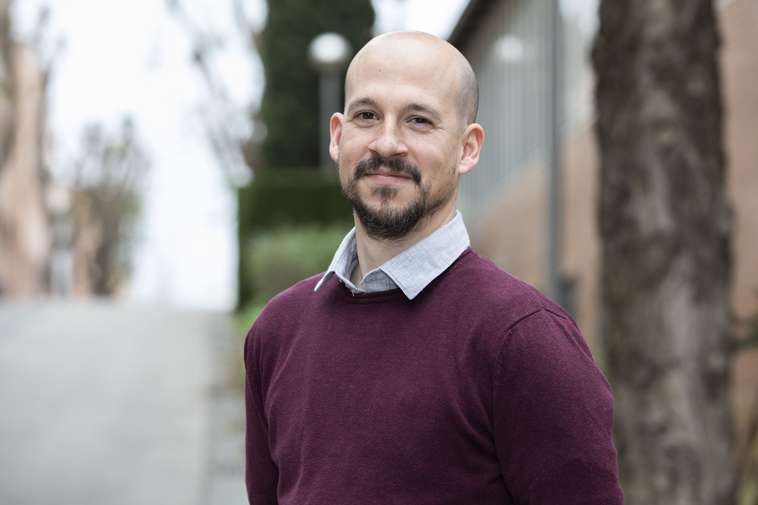
Dr Joel Jurado (CompassIs)

Tahira Ahmed (Curve Works), Iván Sáenz Domínguez (IRURENA) / Joep Grapperhaus (10XL)
Managing Director of Curve Works (Tahira) / Research Engineer at IRURENA / CEO of ROBTRUSION (Iván) / Maritime Engineer, CTO at 10XL (Joep)
2023 Feb
❶ Your organisations are involved in the FIBRE4YARDS activity “Assessment of advanced FRP manufacturing and joining technologies to be transferred to the shipbuilding industry”. What is your specific role in the project and what manufacturing technologies and processes are you working on?
Iván: The mission of IRURENA GROUP in FIBRE4YARDS is to analyse the feasibility of implementing the Robtrusion technology to manufacture straight and curved stiffeners to produce small and medium-length composite ships. To that end, we are working on adapting the manufacturing technology and the final product to the shipbuilding industry.
Robtrusion is an innovative solution which is not yet industrialised but is getting closer to the market and specifically to the shipbuilding industry every day. The basis of the innovation is a paradigm shift from traditional pultrusion process, where the profile is cured outside the mould with a completely different physical principle to the traditional process.
Joep: I am 10XL's Chief Technology Officer (CTO) and within FIBRE4YARDS responsible for the additive and subtractive manufacturing and automated tape placement technologies. We use robotic thermoplastic materials extrusion to build up a rough shape, robotic CNC routing for finishing and robotic thermoplastic tape placement for reinforcement. For FIBRE4YARDS, this is required for the production of a 4x3 m bow section of a ferry catamaran.
Tahira: Thanks to this project, we have made huge steps forward in accelerating the production of composite panels. The major breakthrough has been the realisation of a heated adaptive surface for on-the-mould curing of panels. This means that a slow and energy-intensive oven, as is traditionally used for curing composite structures, is no longer required.
Iván: We have scaled up the Robtrusion line from lab scale to pre-industrial level. Therefore, we have modified all parts of the manufacturing process, including the layout of the lab. For example, the capacity of the reinforcement creel was increased. In addition, a new creel for fabrics and tapes was developed and integrated into the machine. Another good example is the increment of the load-bearing capacity of the robot arm, which is also equipped with a customised gripper designed for the production of stiffeners.
Joep: In the last two years, we have expanded our machine park not only in terms of dimensions, but also in terms of function, flexibility, automation and process control. Two large robots on a 12 meter track were installed, one equipped with AM (Additive Manufacturing) and CNC, the other with AM and ATP (Automatic Tape Placement). For AM, material type, flow and cooling control were optimised; for ATP, process parameters such as pressure, gas mixture and temperature had to be found.
❸ What are the critical points that need to be optimised and how do you go about this?
Tahira: While we have never agreed with this, there is a concern that the join between panels in a modular build is the weak point. We have designed the joints and the joining method such that firstly, the joints have the same mechanical performance on large panels as on lab-scale coupons, and secondly, the elongation at failure of the joints is higher than the elongation the entire structure is designed for. Structural tests performed within the project continuously confirm the robustness of design.
Iván: Transferring innovative technologies from the lab to the industry implies many challenges. For example, no shipyard will want to buy our profiles unless we have a robust manufacturing process. Thus, our first challenge was to prove the feasibility of manufacturing large parts, because until this project, we had only manufactured small profiles. The second challenge was to ensure the repeatability of the process by optimising the pulling system.
We are currently working on improving the geometric accuracy of the profiles. This is an important milestone for us as we have to analyse many parameters and apply different control strategies. In this task, we want to go to the limits of the technology and design the process parameters in such a way as to optimise productivity, cost and efficiency.
Joep: We are now finishing on cooling and flow for AM, followed by some hardware upgrades related to the heating/extrusion system. The print bed also requires changes. For ATP, we need to develop a bigger spool for tape storage and start more extensive testing with multi-plane layups.
❹ What other challenges are you facing in this context?
Tahira: In one word: acceptance. We are proving that modular building through panel assembly is viable and a strong business model. Ultimately, we still need the shipbuilding industry to accept and switch to this method.
Iván: The achievement of the objectives must be proved by means of a real demonstrator, which will be the superstructure of a catamaran. Our task is to manufacture some straight and three curved profiles with different radii and orientations. This is a big challenge because all the profiles will be assembled with the components of other partners, and our work will influence other technology providers and vice versa. Thus, the responsibility of this task is high, but it is also an extremely exciting and enriching task, like the whole project.
Joep: As the parts to produce are getting bigger, our robots tend to look smaller. This requires additional fixtures, part-orientation and recalibration. As energy, materials and parts have become more expensive, 24/7 production is key. This also involves complex logistics, staff availability and safety precautions.
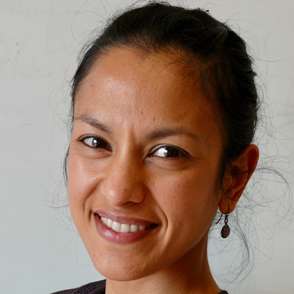
Tahira Ahmed, Managing Director of Curve Works
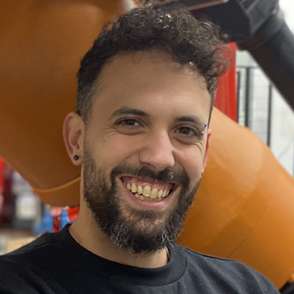
Iván Sáenz Domínguez, Research Engineer at Irurena Group / CEO of ROBTRUSION
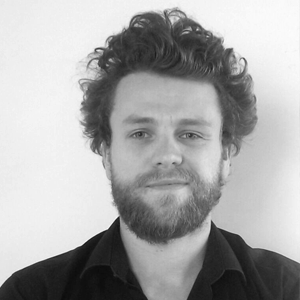
Joep Grapperhaus, Maritime Engineer, CTO at 10XL

Cécile Denogens, Nicolas Huonnic, Yann Le Gall, Fabien Rosso/ Aleksandra Ziemińska-Stolarska, Mariia Sobulska, Ireneusz Zbiciński / Attila Uderszky
Engineers and researchers at Naval Group / Łódź University of Technology / ZAFIRO
2024 Jan
❶ Can you describe for us the FIBRE4YARDS real-scale demonstrator? For Naval Group, what were the main challenges regarding the design and assembly of such a structure?
Cécile, Nicolas, Yann and Fabien: The real-scale demonstrator is a technological showcase of different advanced processes. It represents a superstructure block, with a lower deck and superstructure panel, of the civil catamaran studied in the project. The lower deck has been made by automated vacuum infusion manufacturing process. Its composite skin and laminated stiffeners were infused into a single phase in less than 4 hours. The sandwich panels of the superstructure were also made by infusion process but the particularity of these parts is to have been made on adaptative moulds; a promising tooling technology to obtain curved elements with variable profiles with a single mould. These sandwich panels have been reinforced by stiffeners produced with two technologies: straight and curved profiles made by out of die UV-pultrusion process (Robtrusion) and the crossings between these profiles made by hot-stamping. Finally, the pillars that hold the superstructure panel consist in a assembly of different sub-components realized with different technologies (3D printing, pultrusion, contact molding).
This demonstrator mixes not only processes but also materials used both in terms of fabrics and resin nature (thermoset and thermoplastic). It also has the specificity of being assembled without any metal element, all the connections were made by bonding which is not the most common assembly method in our production.
In conclusion, the main challenge was to assemble in a short time a set of eclectic elements of very large size while ensuring the total safety of operators in a modular construction approach.
❷ What are the main lessons learnt from the manufacturing process?
Cécile, Nicolas, Yann and Fabien: This demonstrator has highlighted the many interests of automated vacuum infusion process in terms of repeatability, reliability, quality, cost reduction and improvement of working conditions (mixing automatically by the machine, real-time monitoring, fiber rate control, end of exposure to toxic substances, waste reduction ...). We have also seen a significant reduction in production time made possible by the integration of preformed stiffeners with the right profile thanks to out of die UV-pultrusion, adaptive molds and standard hot-stamping bracket.
Lastly, this demonstrator also allowed us a better understanding of the logic related to the modular design and modular construction of composite ship block and offers a glimpse of the potential for the shipyards of the
future.
❸ The team of the Lodz University of Technology performed Life Cycle Analysis (LCA) for the FIBRE4YARDS technologies. Can you please the main steps of such an analysis?
Aleksandra, Mariia, Ireneusz: The Life Cycle Assessment is a science-based approach of assessing the potential environmental impacts of products or services during the entire life cycle. The methodology consists in carrying out an assessment of natural resources consumption, energy consumption and emissions into the environment (emissions to air, water, and ground), for each life-cycle phase of the system understudy.
First, during LCA analysis, all incoming and outgoing flows (material and energy flows, both extracted from the environment and released into it) are inventoried for each life-cycle phase. Then, they are aggregated to
quantify environmental impact indicators. Results are therefore presented through several environmental impact indicators, like: climate change, ozone depletion, human toxicity, fossil fuel consumption, eutrophication,
cumulative energy demand and carbon-related indicators including carbon dioxide-equivalent (CO2 eq.). Inventory data of the FIBER4YARDS technologies was collected and systematically updated
in cooperation with our industrial partners (IRURENA, INEGI, 10XL, Naval Group). In case of lack of data in the database, materials were synthesized(e.g. carbon fibre). SimaPro software, which is the professional tool to
collect, analyse and monitor the sustainability performance data was used to perform LCA calculations in the project.
❹ What are the conclusions in terms of environmental impact?
Aleksandra, Mariia, Ireneusz: The average environmental load of FIBRE4YARDS technologies is relatively low, less than 7 kg CO2 eq. in relation to 1 kg of the final product (except hot stamping). Results of LCA calculations proved that the biggest environmental impact is produced by the materials and compounds, from 56 to 95%. Waste management (EoL scenario) contributes from 5 to 39% of total carbon footprint for the technologies developed in the FIBER4YARDS project. The contribution of energy in total carbon footprint is in the range of 6 to 27%.
Accordingto the ReCiPe Midpoint (H) methodology, three Impact Categories (Terrestrial ecotoxicity, Global warming and Human non-carcinogenic toxicity) are the most affected by each of the technologies developed in the frame of the project.
The final environmental profiles of the FIBER4YARDS technologies present environmentally optimal shipbuilding technologies regarding the materials, compounds and energy usage for the standard waste treatment scenarios.
Recommendations for optimal solutions of environmentally friendly FRP production technology for the shipbuilding industry must consider minimalization of impacts of materials,compounds and energy usage.
❺ ZAFIRO accompanied the consortium partners in their business and exploitation planning. Many FIBRE4YARDS technologies have matured between 2021 and 2023 and are close to market replication level. What is the roadmap to exploitation with regards to current market and technology trends?
As regards to current market and technology trends, the competition in the vessel production sector is very intensive. Every shipyard is trying to increase efficiency and reduce material and fuel costs. The exploitation plans that were set up in FIBRE4YARDS are perfectly fitting into this international trend, by having FIBRE4YARDS technologies developed from lower technology readiness level to much closer-to-market levels. Such technologies are for example the out-of-die UV cured pultrusion developed from TRL5 to TRL7, hot stamping from TRL4 to TRL6 and the adaptive mould development from TRL4 to TRL8.
❻ What was the procedure to carry out the cost-benefit analysis? What are the main conclusions?
The procedure to carry out the cost-benefit analysis was based on the standard European Commission’s Guide on investment projects. The FIBRE4YARDS cost-benefit analysis was specifically used as an analytical tool for judging the possible economic advantages or disadvantages of the project applications’in a shipyard environment by assessing its costs and benefits in order to determine the welfare change attributable to it. Moreover, the cost-benefit analysis was structured into a financial and economic analysis to properly measure FIBRE4YARDS’s financial sustainability and its contribution to social welfare.
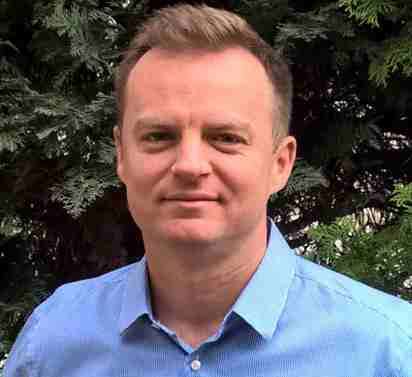
Attila Uderszky
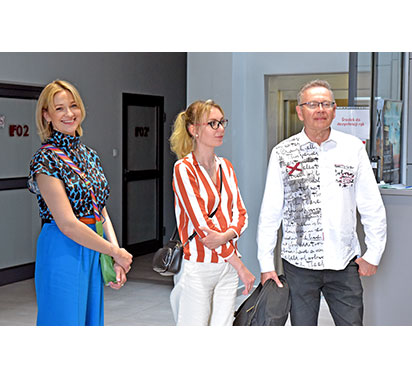
From left to right: Aleksandra Ziemińska-Stolarska, Mariia Sobulska, Ireneusz Zbiciński
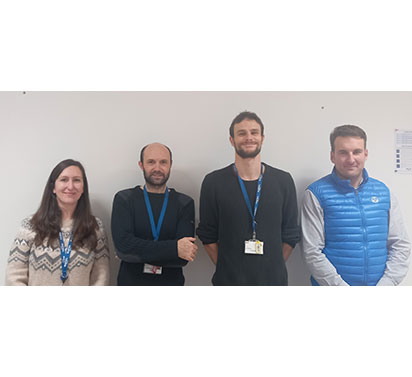
From left to right: Cécile Denogens, Nicolas Huonnic, Yann Le Gall, Fabien Rosso
DISCLAIMER
The information, statements and opinions in the above interviews are personal views from the individuals involved in the FIBRE4YARDS project, and do not necessarily reflect the views of the FIBRE4YARDS consortium as a whole, nor of the European Commission. None of them shall be liable for any use that may be made of the information contained herein.